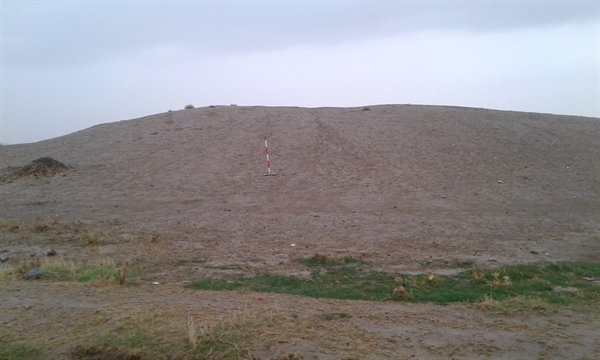Ancient hill rescued from destruction

TEHRAN – Iran’s cultural heritage body has recently defined new boundaries for Negar-Khatun hill in order to protect the ancient site from deliberate destruction.
A demarcation project has recently been completed on the hill to eliminate threats of land-grabbing, illegal construction or repurposing its lands to agricultural fields, CHTN quoted archaeologist Iman Ronasi as saying on Sunday.
“Over the past years, [some] indigenous farmers brought serious and irreversible damage to the hill by leveling [segments of] it to add to their lands,” Ronasi explained.
“The other damage to this hill was illegal construction within its boundaries or even on its slops, he added.
The mound roughly stretched 110 meters in the south-north direction, the archaeologist added.
Some 600 households are living in the village, which also includes some 70 industrial units.
Authorized and supervised by the Cultural Heritage and Tourism Research Center, a team of archaeologists established the boundaries after 13 trenches were dug, each spanning 100 by 150 centimeters.
Situated in Famenin county, west-central Hamedan province, the mound, which is deemed to enfold noticeable cultural heritage, is named after Negar-Khatun in its vicinity.
Hamedan province, and its capital city of the same name, are deeply soaked in history as the modern capital largely lies on ancient Ecbatana, which was once the capital of Media and subsequently a summer residence of the Achaemenian kings.
The Greek historian Herodotus, according to Britannica Encyclopedia, described the city in the 5th century BC as being surrounded by seven concentric walls. Ecbatana was captured from the Median ruler Astyages by the Persian king Cyrus the Great in 550 BC, and it was taken from the last Achaemenian ruler by Alexander the Great in 330 BC. The site of the ancient city lies partly within the modern city of Hamedan and has never been excavated.
AFM/MQ/MG
Leave a Comment